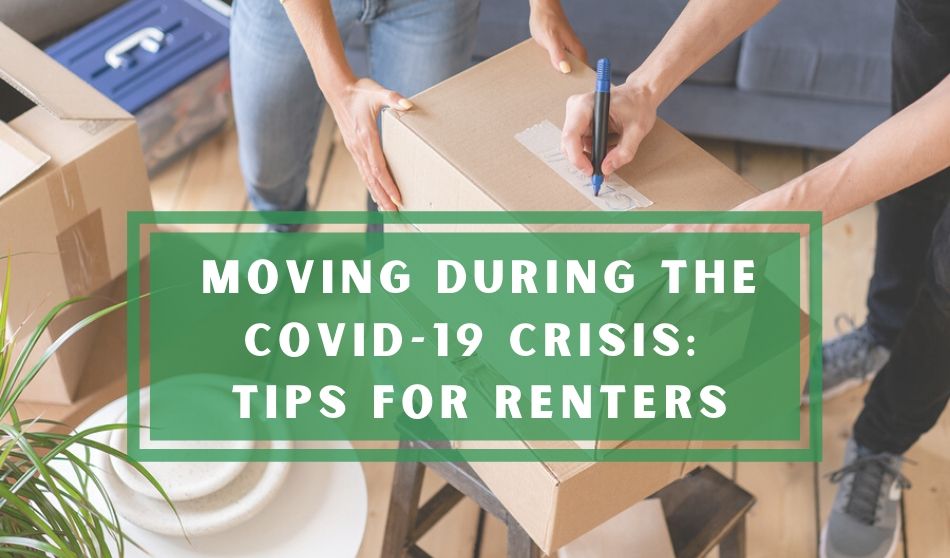
Moving is always stressful. Now, with restrictions due to the coronavirus pandemic, it’s become something else entirely. While many may attempt to reschedule their moves until the status quo returns, some can’t delay the process. They may have to relocate for work or to take care of family members. Others signed a new lease before the crisis occurred.
If you plan to move during this trying time, follow the six tips below:
1. Check Local Regulations
The federal government deemed moving services as essential businesses. However, state and local municipalities may have different regulations in place regarding the activity. Before you sign a lease, be sure to research local restrictions on travel and gatherings.
Keep in mind you may also stumble upon limits for which buildings you can move into. Contact the property manager to confirm that they’re accepting applications or working with tenants to plan move-in dates.
Some complexes, especially in cities, may not allow residents to move in during shelter-in-place orders. If you have your eye set on specific amenities, you may have to compromise or wait until a later date.
2. Conduct a Virtual Tour
If you need to move, you still want to hunt around for different apartments — don’t sign a lease for the first one you see. If you find something you like, contact the owner or manager and ask about virtual tour options. Many offer 3D videos allowing you to see the various rooms and floor plans.
Another option is to set up a tour with limited contact. Pick a day and time that works for you, and ask the manager to maintain social distancing regulations — maybe even staying in the hallway while you check out the space. You can meander around the rooms and write down any questions you may have. After, you can talk on the phone or via email.
3. Figure Out Your Financials
If you’re worried about money right now, you’re not the only one. Currently, 67 million Americans believe they’ll have difficulties paying their bills due to COVID-19. Plus, 75% of the population believes the virus will trigger another recession. Before you decide to make a big move, be sure you understand your financial situation.
Are you currently employed? If so, will the coronavirus affect your employment in any way? With these answers, you can determine what your budget is and how much you can reasonably expect to spend on housing. If you are employed but need to save, try to cut out non-essential spending habits, such as takeout and movie rentals.
4. Look for Move-In Deals
As the coronavirus continues to restrict the livelihoods of millions of Americans, rent prices have begun dropping. If you’re planning a move, look around for deals that offer discounts off the first month’s rent. Between January 2019 and March 2020, for instance, rent at apartment buildings in Philadelphia declined by 0.5%, coming in at around $2.26 per square foot.
Most of these discounts are due to massive increases in new inventory coinciding with individuals choosing to stick to their current leases. As a result, many apartments remain vacant, with building owners missing out on potential tenants. To get people in the door, managers look to money-saving deals.
5. Plan the Pack-Up Process
Clutter will bring you down during any relocation. Before your move, go through your belongings and get rid of anything you don’t want. As many donation centers are closed, you’ll need to call ahead and ask about no-contact drop-off options. Several have drive-thru stations where you stay in your car as a worker retrieves your boxes.
Before you pack what you want to keep, invest in new cardboard boxes or get free recycled boxes from local resale websites or grocery stores. Many health experts do not view the risk of transmission via packaging to be very high, as testing indicates the virus lasts on cardboard for 24 hours. However, it’s still smart to leave reused cardboard outside for a day or two before using it.
6. Move to Your New Apartment
Now it’s time for the big move. If possible, you and any household members should move all items yourselves, as experts discourage gathering in large groups. During this process, be sure to wear a mask and gloves. You should also disinfect points of contact, such as drawer handles, doorknobs and steering wheels.
Don’t think you can handle the transition on your own? If so, research moving companies in your area and see how each handles the current COVID-19 situation. Many have new practices in place, including sending home workers who show signs of illness. Once the move is complete, wipe down boxes and furniture before you unpack.
Planning a Move? Learn How to Navigate the Current Crisis
Moving is no easy feat, and the COVID-19 pandemic puts a new strain on plans. If you must relocate, follow the tips above and remember to stay safe. Wear a mask, don some gloves and always wash your hands when you return home.





